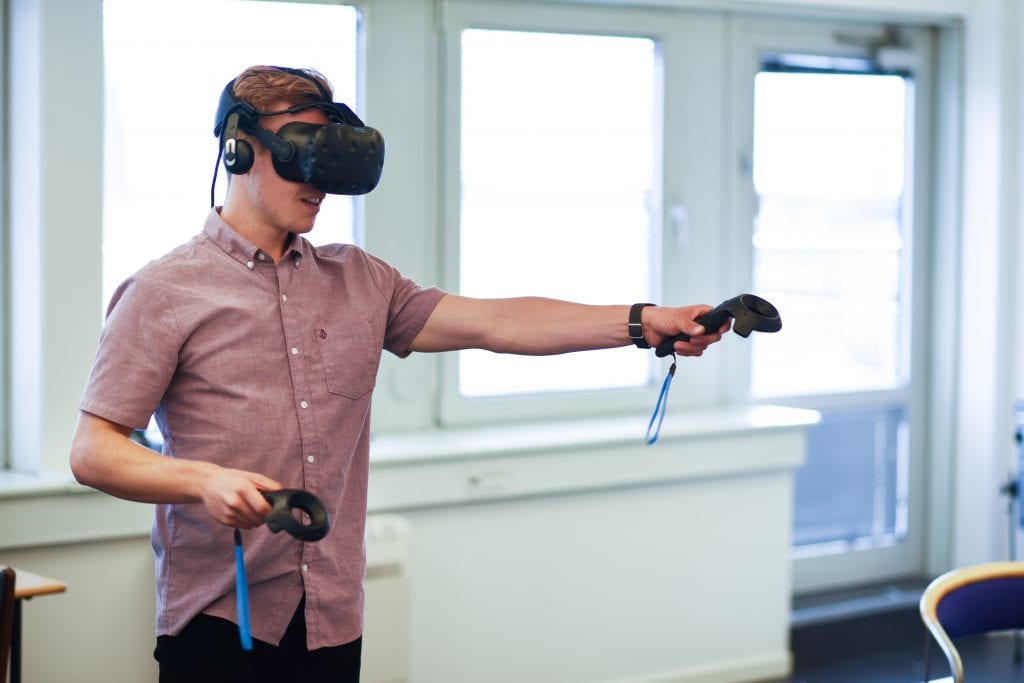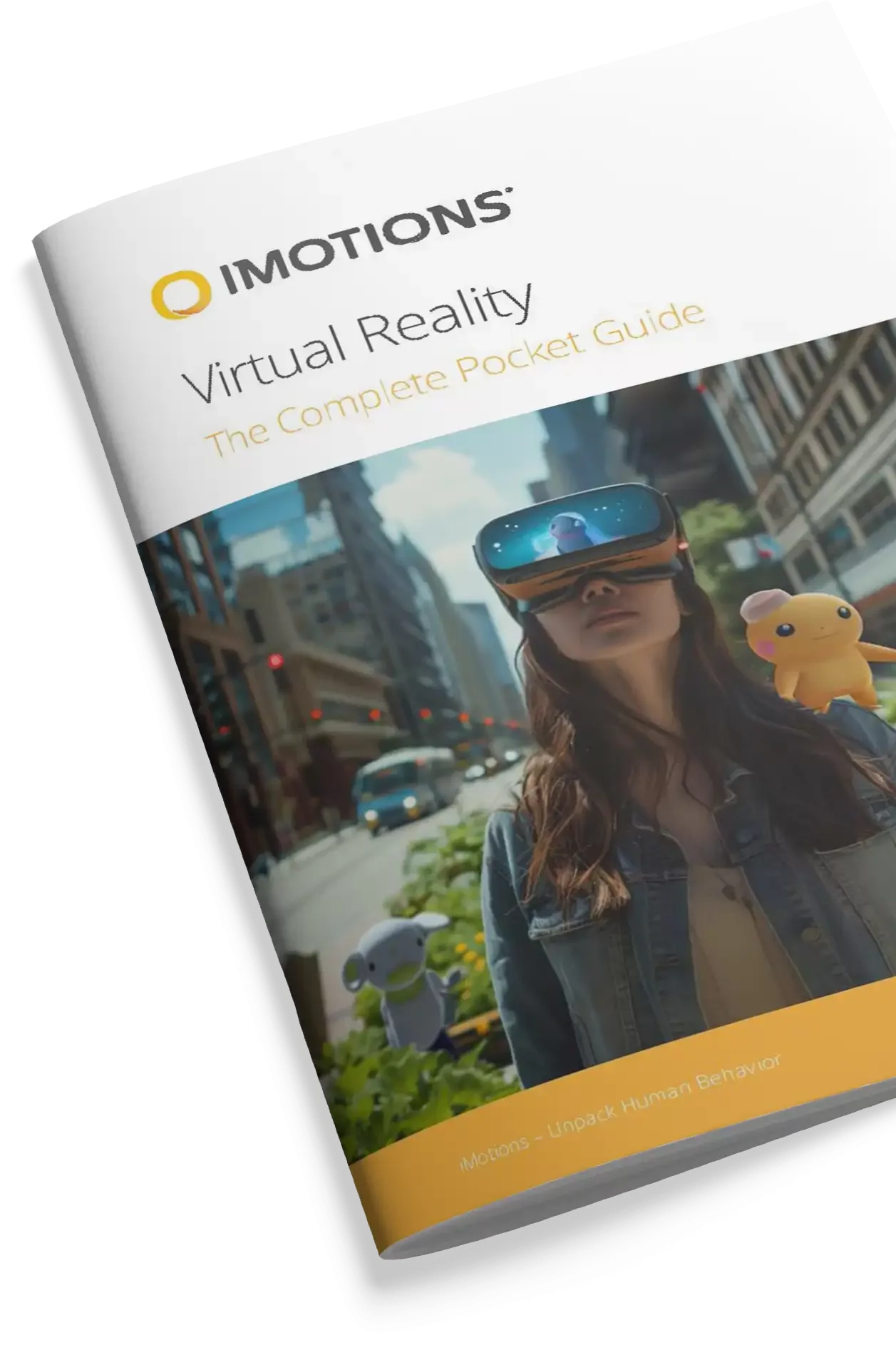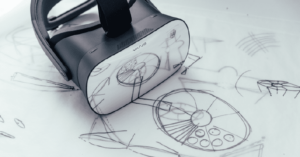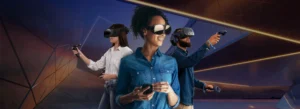Virtual Reality (VR) eye tracking represents a cutting-edge convergence of immersive technology and sophisticated gaze tracking capabilities. By integrating eye tracking into VR headsets, developers and researchers can create more interactive and responsive virtual environments. This article explores the mechanics of VR eye tracking, its applications, and the benefits it offers.

What is VR Eye Tracking?
VR eye tracking involves embedding eye tracking sensors within VR headsets to monitor and analyze where the user is looking within the virtual environment. This technology enhances the VR experience by making interactions more intuitive and providing detailed insights into user behavior and preferences.
How VR Eye Trackers Work
- Integrated Infrared Illumination: VR headsets equipped with eye tracking use built-in infrared LEDs to illuminate the eyes. This light is invisible to the user but creates reflections on the eye’s surface necessary for tracking.
- Eye Cameras: Small, high-speed cameras are embedded within the headset, positioned to capture images of the eyes. These cameras track eye movements in real-time, recording data at high frame rates to ensure accuracy and responsiveness.
- Pupil and Corneal Reflection Detection: The eye tracker’s software detects the reflections from the cornea and the pupil. By analyzing these reflections, the system determines the direction of the user’s gaze within the virtual environment.
- Real-Time Gaze Mapping: The eye tracker maps the user’s gaze onto the virtual environment. This involves translating the eye movement data into specific coordinates within the VR space, allowing the system to understand where the user is looking and adjust the virtual scene accordingly.
- Calibration: Calibration is crucial for ensuring accurate gaze tracking in VR. During this process, users are guided to look at specific points within the virtual environment, allowing the system to align the captured eye data with the virtual coordinates.
Applications of VR Eye Tracking
- Enhanced User Experience: VR eye tracking enables more natural and immersive interactions within virtual environments. For instance, objects can respond to the user’s gaze, creating a more engaging experience.
- Foveated Rendering: This technique uses eye tracking to improve rendering efficiency. By rendering high-resolution graphics only in the area where the user is looking (foveal region) and lower resolution in the peripheral areas, VR systems can enhance performance and reduce computational load.
- Training and Simulation: VR eye tracking is used in training simulations for various industries, such as aviation, medicine, and military. By tracking trainees’ gaze, instructors can assess their attention and focus, providing targeted feedback to improve skills and performance.
- Research and Behavioral Studies: Researchers use VR eye tracking to study visual attention, decision-making, and cognitive processes in a controlled yet immersive environment. This allows for the investigation of behaviors that are difficult to replicate in the real world.
- Accessibility Enhancements: Eye tracking in VR can assist users with limited mobility or other disabilities by enabling gaze-based controls. This makes VR applications more accessible and inclusive.
Benefits of VR Eye Tracking
- Immersive Interaction: Eye tracking enhances immersion by allowing virtual environments to respond dynamically to where the user is looking, making interactions more natural and intuitive.
- Efficient Resource Management: Techniques like foveated rendering reduce the computational load by focusing resources on the most critical areas of the user’s view, improving overall system performance.
- Detailed User Insights: VR eye tracking provides detailed data on user behavior and visual attention, which is invaluable for research, training, and user experience design.
- Enhanced Realism: By allowing virtual characters and environments to respond to the user’s gaze, VR eye tracking creates a more realistic and engaging experience, further blurring the lines between virtual and real worlds.

Real-World Examples
- Gaming: Eye tracking in VR games enables new gameplay mechanics where characters and objects react to the player’s gaze. This creates a more interactive and immersive gaming experience.
- Medical Training: VR eye tracking is used in medical training simulators to assess how trainees focus on critical areas during procedures. This helps in refining their skills and improving patient outcomes.
- Market Research: Companies use VR eye tracking to create virtual shopping environments where they can study consumer behavior and preferences in a realistic yet controlled setting. This data informs product placement and marketing strategies.
Case Studies
- Aviation Training: A study using VR eye tracking in flight simulators showed that pilots who received gaze-based feedback improved their scan patterns and attention management, leading to better performance during real flights.
- Retail Environment Research: Researchers created a virtual store and used VR eye tracking to study how customers navigate the space and interact with products. The insights gained helped retailers optimize store layouts and product placements to enhance customer engagement and sales.
Conclusion
VR eye tracking is revolutionizing how we interact with virtual environments by making them more responsive and intuitive. It offers significant benefits across various applications, from gaming and training to research and accessibility, providing a deeper understanding of user behavior and enhancing the overall VR experience. As VR technology continues to evolve, the integration of advanced eye tracking will undoubtedly lead to even more innovative and impactful applications.
For those interested in leveraging VR eye tracking technology, the benefits are clear: enhanced immersion, efficient resource management, detailed user insights, and more. By adopting this cutting-edge technology, developers and researchers can create more engaging, effective, and accessible virtual experiences.
Free 52-page Virtual Reality Guide
For Beginners and Intermediates
- Get accessible and comprehensive walkthrough
- Valuable human behavior VR research insight
- Learn how to take your research to the next level











